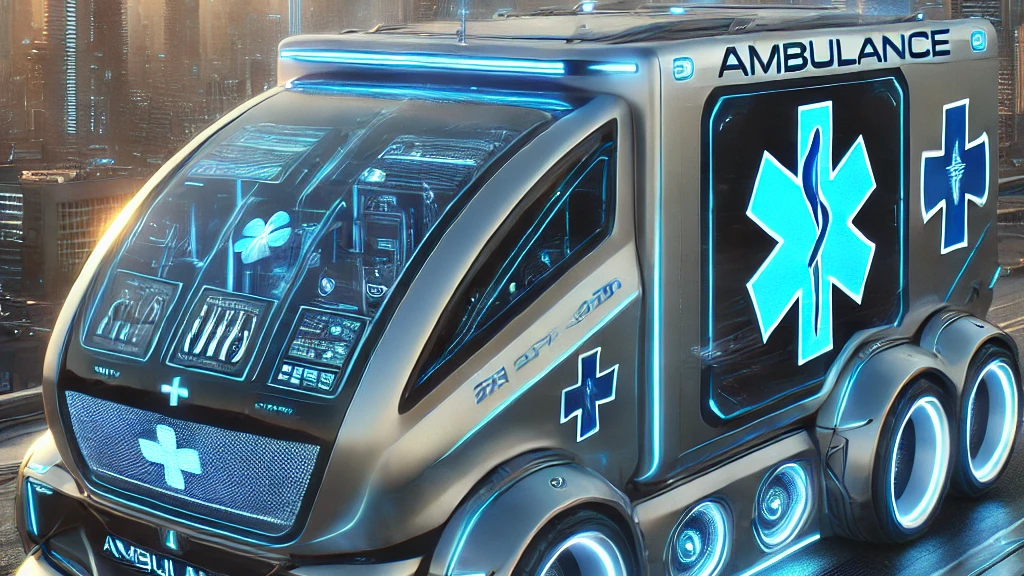Private ambulance services play a critical role in healthcare, providing timely transportation and medical care to those in need. As technology advances, these services are being modified in ways that increase efficiency, safety, and patient outcomes. In this article, we’ll look at how technology developments are transforming the private ambulance service market.
1. Advanced Communication Systems
Effective communication is crucial in emergency medical services. With the advent of advanced communication systems, private ambulance service providers can now relay information in real time between ambulances, dispatch centres, and hospitals. These systems include GPS tracking, live video feeds, and encrypted messaging.
GPS tracking allows dispatchers to monitor the exact location of ambulances, ensuring that the closest vehicle is sent to the emergency site. This reduces response times and can be the difference between life and death in critical situations. Live video feeds enable paramedics to consult with doctors while on the move, ensuring that patients receive the best possible care before reaching the hospital. Encrypted messaging ensures that all communications remain secure, protecting patient privacy.
2. Telemedicine Integration
Telemedicine has been a game-changer in the healthcare industry, and its integration into private ambulance services has brought about significant improvements. With telemedicine, paramedics can connect with specialists while on the road. This allows for remote consultations, where a doctor can guide the paramedic through complex procedures or make decisions about the patient’s care.
For example, if a patient has indications of a stroke, the paramedic can contact a neurologist who can provide rapid care. This not only improves patient outcomes but also guarantees that the patient receives the best therapy possible before arriving at the hospital.
3. Electronic Health Records (EHR) Access
Electronic Health Records (EHR) are now widely used in hospitals, and commercial ambulance service providers are beginning to integrate them into their operations. With EHR access, paramedics can quickly obtain a patient’s medical history, allergies, and current medications. This information is crucial when making decisions about treatment, especially in emergencies where time is of the essence.
For example, if a patient is unconscious and unable to provide information, the paramedic can access the EHR to check for any known allergies or existing medical conditions. This guarantees that the patient receives prompt care, lowering the chance of complications.
4. Mobile Diagnostic Equipment
Traditionally, ambulances have been equipped with basic medical supplies. However, the integration of mobile diagnostic equipment has taken private ambulance service to a new level. Modern ambulances are now equipped with portable devices that can perform diagnostic tests such as ECGs, ultrasounds, and blood tests.
These devices allow paramedics to assess the patient’s condition more accurately and quickly. For instance, if a patient is suspected of having a heart attack, an ECG can be performed on the spot, and the results can be transmitted to the hospital. This enables the hospital staff to prepare for the patient’s arrival and provide immediate treatment, reducing the time between diagnosis and intervention.
5. Smart Ambulance Technology
Smart ambulances are the next big thing in the private ambulance service industry. These vehicles are equipped with advanced technologies that improve patient care and operational efficiency. Smart ambulances feature automated systems that control the internal environment, such as temperature and lighting, to ensure patient comfort.
Moreover, intelligent ambulances are equipped with sensors that monitor the patient’s vital signs and relay this information to the hospital in real-time. This allows doctors to track the patient’s condition continuously and make informed decisions about their care. Additionally, intelligent ambulances can be integrated with traffic management systems, allowing them to navigate through traffic more efficiently, further reducing response times.
6. Drones for Medical Supply Delivery
While drones have yet to be widely used in the private ambulance service industry, they hold great potential for the future. Drones can be used to deliver medical supplies to the scene of an emergency, especially in remote or hard-to-reach areas. For example, if an ambulance is stuck in traffic, a drone can deliver critical supplies such as defibrillators or blood packs to the paramedics on the ground.
This innovation can significantly improve the chances of survival for patients in critical condition, ensuring that they receive the necessary treatment as quickly as possible. While still in the experimental phase, the use of drones in private ambulance services is expected to become more common in the coming years.
7. Automated External Defibrillators (AEDs)
Automated External Defibrillators (AEDs) have become a staple in private ambulance service vehicles. These gadgets are intended to be user-friendly so that even persons without medical expertise can use them in an emergency. AEDs are critical in cases of abrupt cardiac arrest because they can provide an electric shock to the heart, resetting its normal rhythm.
Modern AEDs are equipped with voice prompts that guide the user through the process, making them easy to operate even in high-stress situations. The widespread availability of AEDs in ambulances has saved countless lives, making them an essential tool in emergency medical care.
8. Artificial Intelligence (AI) in Ambulance Dispatch
AI is becoming increasingly significant in the private ambulance services market. AI-powered systems are being used to optimize ambulance dispatch, ensuring that resources are allocated efficiently. These systems analyze data such as traffic patterns, weather conditions, and ambulance availability to determine the best course of action.
For instance, if multiple emergencies co-occur, the AI system can prioritize calls based on the severity of the situation and dispatch ambulances accordingly. This ensures that those in the most critical condition receive help as quickly as possible. AI is also being used to predict demand for ambulance services, allowing providers to plan and allocate resources more effectively.
Conclusion
The private ambulance service industry is undergoing a transformation driven by technological innovations that improve patient care and operational efficiency. From advanced communication systems to AI-powered dispatch, these technologies are revolutionizing the way private ambulance services operate. As technology progresses, we may see even more significant advancements in the quality of treatment provided to patients.
So, if you are looking for advanced private ambulance services, contact RED.health. As they it is known for its commitment of remaining at the forefront and ensuring that patients receive the finest possible care when they require it most.











